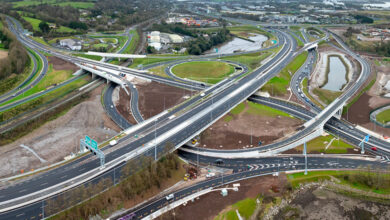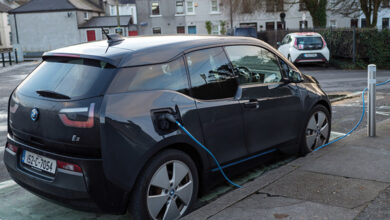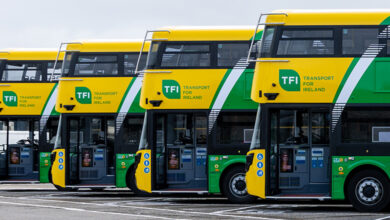How do you drive social value and sustainability in transport infrastructure projects?

Jacobs Senior Stakeholder Engagement and Communications Professional Matthew Nebbett shares his project insights with using stakeholder engagement to drive a triple bottom line in major infrastructure. projects.
Spoiler alert: There is no simple answer. Achieving social value and sustainability in transport infrastructure projects demands a meticulous blend of talent, technology, and strategy. Each project is a unique puzzle, shaped by the local context and the client’s needs. When you factor in the influences of climate change, economic pressure and political uncertainty, you are faced with one of the most formidable infrastructure challenges in the world.
However, we do know one of the greatest ingredients for success – stakeholder engagement. It is both the fuel and the glue for these projects; it lays a deeper, more resilient foundation for collaboration and innovation across partners and communities. If done correctly, it also uncovers more opportunities for social value and sustainability.
I have been privileged to work on several major infrastructure projects. These types of projects require massive construction at scale, which can heavily impact local communities in the short term, especially in urban areas.
Navigating this disruption requires strategies built on industry experience and data-driven insights and upgraded with the latest digital tools for communications, consultations, planning and engagement. It also requires a sustainability and social value lens in all decision-making. These are the lessons I have learned from over 30 years of engagement with local authorities, multinational companies, and, most importantly, the public.
Take stakeholders on a journey, starting with the ‘why’
The motivation for better urban transport is clear: the most successful cities by any measure – including economic, environmental and social value – have efficient, sustainable and affordable public transport and insight-led transport infrastructure. This is bolstered by active travel options and inclusive design.
Improving these veins and arteries of a city has a knock-on effect, as it drives up productivity and economic opportunities. It has proven to make life better, cleaner and healthier for all citizens in the long term, but there is an asterisk. Achieving it requires disruption in the short term, and this needs to be carefully explained. All stakeholders need to understand the ‘why’ behind the project and be constantly reminded about the triple-line benefits. This is where multimedia communication technology, especially the remote, visually-based options, can help easily share the stories and narratives behind the long-term vision and changes needed.
Steer clear of silence and location silos
Silence on a project will be filled up with either fake news or speculation – both drive unnecessary friction. On a previous major project over two years, we constantly drove community education and engagement, and it meant we received just under 300 complaints across the lifespan – which is very low considering the scale of the project. We always gave the worst-case scenario and ensured there were no surprises – critical on any project.
“Building sustainable transport infrastructure that offers lasting positive outcomes is a massive, complex challenge, but it is also arguably the most effective way to upgrade cities.”
The goal is to help the stakeholders plan their lives better. In most cases, it is not just the residents you are speaking to. For example, on a street closure, you must let the local resident’s association and council know and put notices up for anyone using the road. It unlocks a ripple effect – you cannot have a mindset that your work only occurs within set boundaries. Share that information more widely, and you will reduce the disruption.
Share a tailored toolbox of information
Your stakeholders will have different motivations, so you need to offer a selection of information triggers to satisfy them all. For some, it will be cost (cheaper transport) or ease of use (less traffic or transport time), while others will be focused on the environment (cleaner air and zero carbon options).
Early in my career, I picked up an apt description for this: Your information should be offered like a chest of drawers. Start with a menu, then provide detailed information in a drawer to suit the need. This information can also help educate and empower government officials (Teachtaí Dála [TD] and key community figures), as they will be able to engage their constituents more effectively by providing them with the answers they need. Get this right, and they will become positive ambassadors for your project.
Instant feedback and data insights are gifts
I am old enough to remember a time of slower communication thanks to landline phones and letters. Everything is now instant, and while it is more time and attention-intensive and drives up scrutiny, it also offers the huge gift of fast, recordable feedback. This offers a treasure trove of information and can lead to more innovation – especially within social value and sustainability.
We can also safely and responsibly store anonymised, aggregated data on stakeholders, which makes it much easier to build relationships and raise collective project awareness. An example of that was with a pensioner in a neighbourhood where we were closing a road for construction. She recently had major heart surgery and was worried that she would not have access to her medical appointments due to the road closure.
She contacted us through one of the project channels, and thanks to our bespoke digital engagement tools, we captured all her medical appointments in our secure system. That meant anyone on the team could step in and help get her to her appointments, ensuring that our equipment and diggers were turned off and the road was clear as workers took lunch breaks over her appointment times.
Building sustainable transport infrastructure that offers lasting positive outcomes is a massive, complex challenge, but it is also arguably the most effective way to upgrade cities. These projects offer a proven formula for making citizens’ lives easier, better and healthier. The secret to getting that right is connecting and collaborating with stakeholders to make the right changes happen and unlock more social value and sustainability opportunities.






